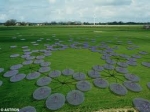Displaying items by tag: radio telescope
ESO, European Southern Observatory
European Southern Observatory, is the foremost intergovernmental astronomy organisation in Europe and the world's most productive astronomical observatory. ESO provides state-of-the-art research facilities to astronomers and is supported by Austria, Belgium, the Czech Republic, Denmark, Finland, France, Germany, Ireland, Italy, the Netherlands, Poland, Portugal, Spain, Sweden, Switzerland and the United Kingdom, along with the host state of Chile. Several other countries have expressed an interest in membership.
ESO, formally the European Organisation for Astronomical Research in the Southern Hemisphere, is usually known as The European Southern Observatory.
ESO's main mission, laid down in the 1962 Convention, is to provide state-of-the-art research facilities to astronomers and astrophysicists, allowing them to conduct front-line science in the best conditions. The annual Member State contributions to ESO are approximately 198 million euros and ESO employs around 700 staff members. By building and operating a suite of the world's most powerful ground-based astronomical telescopes enabling important scientific discoveries, ESO offers numerous possibilities for technology spin-off and transfer, together with high technology contract opportunities and is a dramatic showcase for European industry.
The ESO Headquarters (comprising the scientific, technical and administrative centre of the organisation) are located in Garching near Munich, Germany. In Chile, ESO operates the Vitacura centre as well as three unique observing sites: La Silla, Paranal and Chajnantor.
ESO is building the 39-metre Extremely Large Telescope, the ELT, which will become “the world’s biggest eye on the sky”.
LOFAR
LOFAR is a very large connected radio telescope, using a new concept based on a vast array of omni-directional antennas.
LOFAR is a Low-Frequency Array for radio astronomy, built by ASTRON, the Netherlands Institute for Radio Astronomy and operated by ASTRON's radio observatory. ASTRON is part of the Netherlands Organisation for Scientific Research.
The project is based on an interferometric array of radio telescopes using about 25,000 small antennas concentrated in at least 48 larger stations. 40 of these stations are distributed across the Netherlands, five stations in Germany, and one each in Great Britain, France and Sweden. Further stations may also be built in other European countries. The total effective collecting area is up to approximately 300,000 square meter, depending on frequency and antenna configuration. The data processing is performed by a Blue Gene/P supercomputer situated in the Netherlands at the University of Groningen. LOFAR is also a pathfinder for the Square Kilometre Array. The Square Kilometre Array will be the world's largest and most sensitive radio telescope. The SKA will be built in Southern Africa and in Australia.
It is a global enterprise bringing together 11 countries from the 5 continents.


